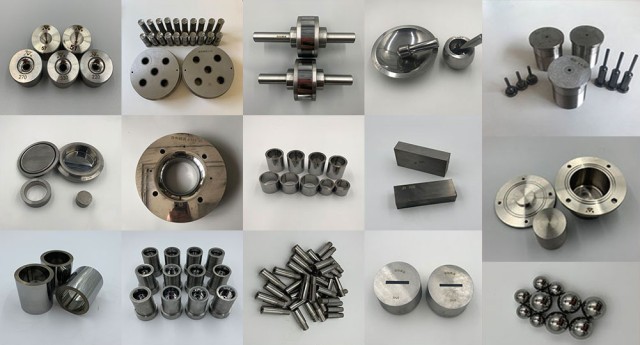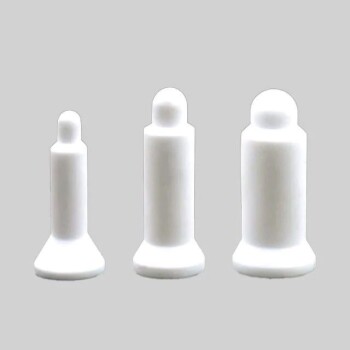Applications of Alumina Ceramics
Mechanical Field
Alumina ceramics, renowned for their exceptional mechanical properties, are widely utilized across various industries due to their high bending strength, Mohs hardness, and superior wear resistance. These properties make alumina ceramics ideal for applications requiring durable and reliable components.
In the mechanical field, alumina ceramics are extensively used in the manufacture of tools, valves, grinding wheels, and bearings. The high bending strength of alumina ceramics ensures that these components can withstand significant mechanical stress, making them suitable for heavy-duty applications. Additionally, their Mohs hardness, which is comparable to that of sapphire, provides excellent resistance to scratching and abrasion, enhancing the longevity of the components.
The wear resistance of alumina ceramics is another critical factor that drives their adoption in mechanical applications. Unlike conventional materials, alumina ceramics exhibit minimal wear even under harsh operating conditions, reducing the need for frequent replacements and maintenance. This not only lowers operational costs but also increases the overall efficiency and reliability of the mechanical systems.
Moreover, the combination of these mechanical properties makes alumina ceramics a preferred choice for applications where both strength and durability are paramount. For instance, in the automotive industry, alumina ceramic bearings are used in high-performance engines due to their ability to withstand extreme temperatures and pressures without compromising performance.
In summary, the superior mechanical properties of alumina ceramics—high bending strength, Mohs hardness, and wear resistance—position them as a leading material in the mechanical field, enabling the production of robust and long-lasting components across various industries.
Electronics/Electricity Field
In the realm of electronics and electricity, alumina ceramics play a pivotal role due to their exceptional electrical insulation properties and minimal high-frequency loss. These ceramics are employed in a variety of forms, including base plates, substrates, films, and electrical insulation ceramics, which are integral components in modern electronic devices.
The superior insulation capabilities of alumina ceramics ensure that they can withstand high voltages without compromising their structural integrity or performance. This makes them ideal for use in applications where electrical isolation is crucial, such as in power distribution systems and high-voltage equipment.
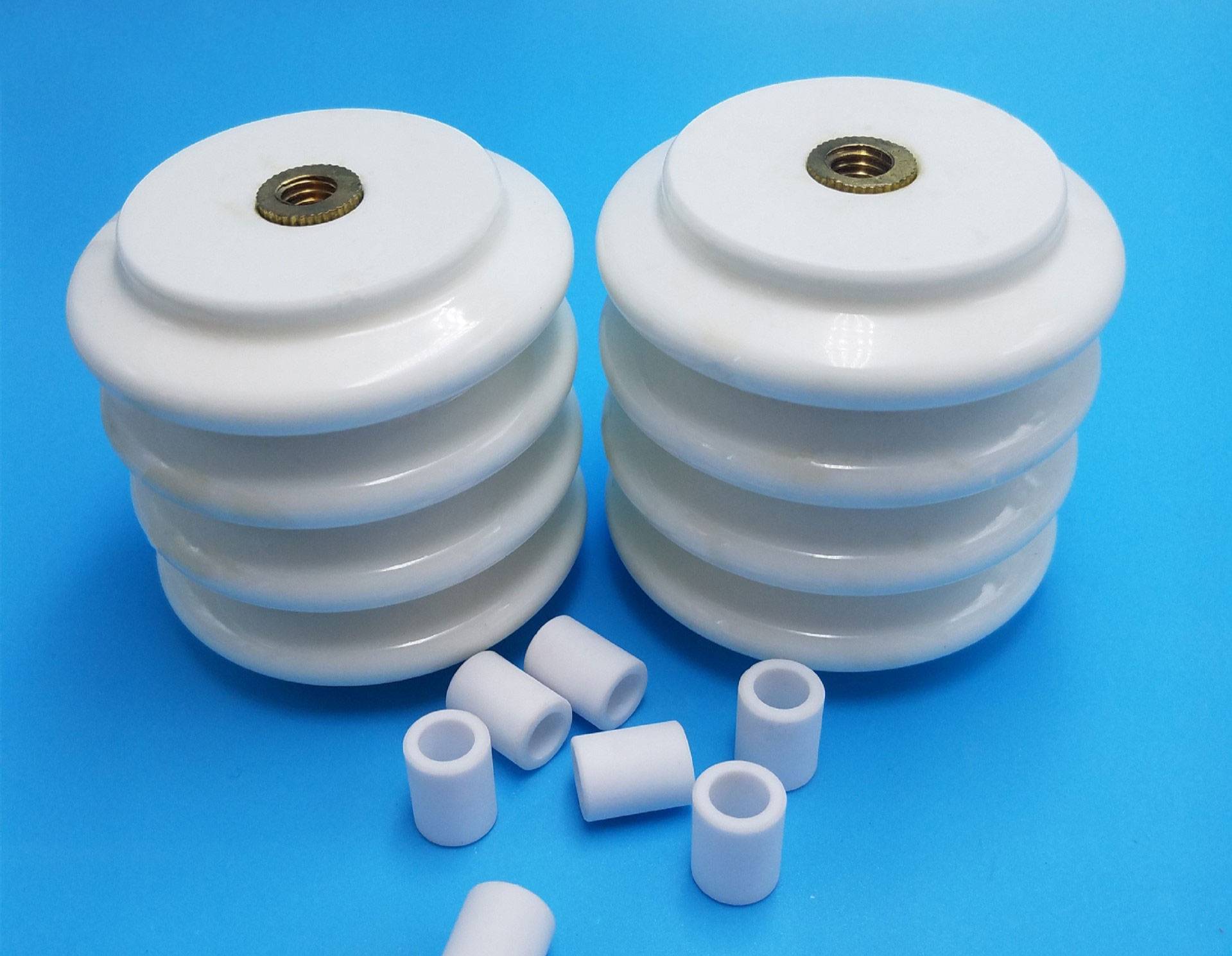
Moreover, the low high-frequency loss characteristic of alumina ceramics is particularly beneficial in the design of electronic components that operate at high frequencies. This attribute ensures that signal integrity is maintained, reducing the risk of signal degradation and interference, which are common issues in high-frequency circuits.
The versatility of alumina ceramics in the electronics field is further underscored by their use in creating substrates for integrated circuits. These substrates provide a stable and reliable platform for the integration of various electronic components, enhancing the overall performance and longevity of the devices.
In summary, the application of alumina ceramics in the electronics and electricity field is driven by their unparalleled insulation properties and low high-frequency loss, making them indispensable in the design and operation of advanced electronic systems.
Chemical Industry
Alumina ceramics play a crucial role in the chemical industry, primarily due to their exceptional corrosion resistance. This property makes them indispensable in various applications, such as chemical filler balls, microfiltration membranes, and corrosion-resistant coatings.
Chemical Filler Balls
In chemical reactors and columns, alumina filler balls are used to enhance mass transfer and reaction efficiency. Their high purity and inertness prevent any unwanted chemical interactions, ensuring the integrity of the process. The durability of these balls, coupled with their resistance to harsh chemicals, makes them a preferred choice in industries dealing with acids, alkalis, and other corrosive substances.
Microfiltration Membranes
Alumina-based microfiltration membranes are employed in processes requiring precise particle separation and filtration. These membranes offer high permeability and selectivity, making them ideal for applications in water treatment, pharmaceuticals, and food processing. Their ability to withstand high temperatures and corrosive environments ensures consistent performance and longevity.
Corrosion-Resistant Coatings
In environments where equipment is constantly exposed to corrosive agents, alumina coatings provide a protective barrier. These coatings are applied to pipes, valves, and storage tanks, safeguarding them from degradation. The high hardness and low porosity of alumina coatings ensure that they remain effective even under prolonged exposure to corrosive substances.
Overall, the superior corrosion resistance of alumina ceramics makes them an essential material in the chemical industry, offering reliable solutions for a wide range of applications.
Medical Field
Alumina ceramics have found significant applications in the medical field due to their exceptional properties. These ceramics are primarily used in the fabrication of artificial bones, joints, and dental implants. The biocompatibility of alumina ceramics ensures that they do not elicit adverse reactions when in contact with living tissues, making them ideal for implantation. Additionally, their inertness prevents chemical interactions with bodily fluids, reducing the risk of corrosion or degradation over time.
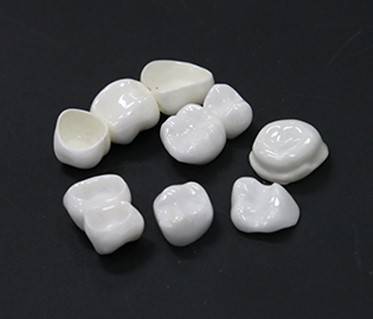
The high hardness of alumina ceramics provides durability and longevity to medical implants, which is crucial for their long-term performance. This hardness also contributes to the mechanical stability of the implants, ensuring they can withstand the stresses and strains of daily use without compromising their structural integrity. Moreover, the smooth surface of alumina ceramics minimizes the chances of bacterial adhesion, thereby reducing the risk of infection.
In summary, the combination of biocompatibility, inertness, and high hardness makes alumina ceramics a preferred material for various medical implants, contributing to improved patient outcomes and enhanced quality of life.
Manufacturing Techniques
Powder Pressing Blanks
Powder pressing is a fundamental manufacturing technique in the production of advanced alumina ceramics. This method involves applying pressure to ceramic powder to form it into a blank, which is suitable for creating simple shapes with precise dimensions. However, this process is not without its challenges. One of the primary issues encountered in powder pressing is mold wear. The repeated application of pressure can cause significant wear and tear on the molds, leading to reduced efficiency and increased production costs.
Despite these challenges, powder pressing remains a crucial step in the manufacturing process, particularly for applications requiring high dimensional accuracy. The technique is particularly favored for its ability to produce blanks that are ready for further processing, such as sintering, which is essential for achieving the final desired properties of the ceramic material.
To mitigate the issue of mold wear, manufacturers often employ specialized materials and coatings for the molds, enhancing their durability and longevity. Additionally, advancements in press design and control systems have allowed for more precise and efficient pressing, further improving the overall quality of the produced blanks.
Isostatic Pressing of Blanks
Isostatic pressing is a sophisticated method that employs fluid to apply uniform pressure across all surfaces of a material, resulting in dense and uniform blanks with exceptional strength. This process involves placing the material in a closed container filled with a liquid medium, which is then subjected to high pressure. The equal distribution of pressure ensures that the material achieves a uniform density, thereby enhancing its structural integrity and performance.
The isostatic pressing process is particularly advantageous for materials that require high precision and uniformity, such as ceramics, cemented carbides, and rare metal powders. By applying pressure in all directions, this technique overcomes the limitations of uniaxial pressing, which can lead to uneven density and structural weaknesses.
There are two primary types of isostatic pressing: cold isostatic pressing (CIP) and hot isostatic pressing (HIP). CIP is used to compact green parts at ambient temperatures, while HIP involves consolidation at elevated temperatures through solid-state diffusion. HIP is also utilized to eliminate residual porosity in sintered parts, further improving their density and strength.
Despite its numerous benefits, isostatic pressing is not without its challenges. The equipment required for this process is complex and expensive, and the overall efficiency is relatively low compared to other forming methods. Additionally, the process can result in lower dimensional accuracy and surface roughness, which may necessitate additional finishing steps.
In summary, while isostatic pressing offers significant advantages in producing high-quality, dense, and uniform blanks, it also presents challenges that must be carefully managed to optimize the final product.
Injection Molding Green Body
Injection molding is a sophisticated technique that excels in creating green bodies with exceptional strength and uniformity. This method is particularly advantageous for producing complex shapes, making it a preferred choice in industries where intricate ceramic components are required.
One of the standout features of injection molding is its ability to minimize organic content within the green body. This reduction in organic materials simplifies the subsequent plastic removal process, thereby enhancing the overall efficiency of the manufacturing workflow. The green bodies formed through this technique exhibit superior mechanical properties, which are crucial for their intended applications in various fields such as electronics, mechanical engineering, and medical devices.
Moreover, the uniformity of the green bodies produced via injection molding ensures consistent performance and reliability. This consistency is vital for applications where precision and durability are non-negotiable, such as in high-stress environments or critical components. The combination of high strength and low organic content not only facilitates easier processing but also contributes to the longevity and performance of the final ceramic products.
Isostatic Pressing Process
Principle of Isostatic Pressing Technology
Isostatic pressing technology involves the placement of a green body within a high-pressure cavity, which is then surrounded by an elastic mold. This setup allows for the application of uniform pressure through a high-pressure liquid medium. The primary objective of this process is to achieve densification, ensuring that the material attains a high density and uniformity.
The process begins by sealing the green body inside the elastic mold, which is subsequently placed in a closed container filled with liquid. High-pressure fluid is then introduced to apply equal pressure to all surfaces of the green body. This uniform application of force significantly enhances the density of the material under high pressure, facilitating the formation of the desired shapes.
One of the key advantages of isostatic pressing is its ability to consolidate powders or heal defects in castings, making it a preferred method for a variety of materials including ceramics, metals, composites, plastics, and carbon. The technology was pioneered in the mid-1950s and has since evolved from a research curiosity to a viable production tool, widely adopted across numerous industries.
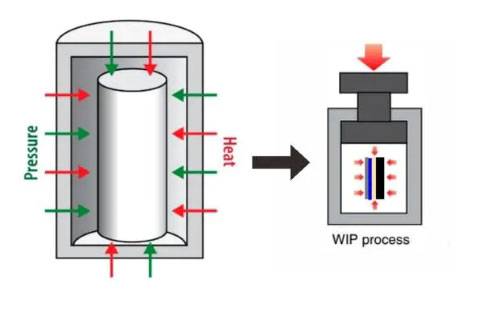
Isostatic pressing offers unique benefits, particularly for ceramic and refractory applications. The uniform force applied over the entire product, regardless of its shape or size, allows for the formation of product shapes to precise tolerances. This capability significantly reduces the need for costly machining, driving its commercial development and acceptance.
In summary, isostatic pressing technology leverages high-pressure liquid to apply uniform force, achieving high-density green bodies with exceptional uniformity and strength. This method is particularly advantageous for complex shapes and materials requiring precise tolerances, making it a cornerstone in the manufacturing of advanced alumina ceramics.
Advantages of Isostatic Pressing
Isostatic pressing offers several distinct advantages over traditional pressing methods, particularly in the realm of ceramic manufacturing. One of the most notable benefits is the production of high-density green bodies with uniform density. This uniformity is achieved through the application of equal pressure in all directions, a process that eliminates the need for lubricants, thereby ensuring a consistently dense material without the introduction of extraneous substances.
This method is particularly well-suited for creating complex shapes that would be difficult to achieve through unidirectional pressing. The absence of rigid dies allows for greater geometric freedom, enabling the creation of intricate parts that would otherwise be constrained by the limitations of traditional pressing techniques.
Moreover, isostatic pressing is highly efficient in handling difficult-to-compact materials such as superalloys, titanium, tool steels, stainless steel, and beryllium. These materials, often expensive and challenging to process, benefit from the uniform pressure distribution that minimizes defects and enhances material utilization. This efficiency is crucial in industries where material costs are a significant factor, such as in aerospace and medical device manufacturing.
In summary, isostatic pressing not only enhances the quality and strength of the final product but also broadens the scope of what can be manufactured, making it an indispensable technique in advanced ceramic production.
Disadvantages of Isostatic Pressing
While isostatic pressing offers advantages such as high compact densities and the ability to form complex shapes, it is not without its drawbacks. One of the primary disadvantages is the low dimensional accuracy and surface roughness of the final products. This can be attributed to the uneven pressure distribution and the elastic nature of the molds used, which often results in deviations from the desired dimensions and a less polished surface finish.
The process itself is complex and requires specialized equipment, adding to the overall complexity. For instance, the molds used in isostatic pressing are typically made from high-purity, high-strength graphite, which not only increases the cost but also necessitates the importation of such materials, further driving up expenses. Moreover, the equipment needed for isostatic pressing is often not suitable for continuous industrial production, limiting its scalability and efficiency.
Another significant drawback is the low production efficiency. The loading and unloading of molds in wet bag pressing, for example, significantly reduces productivity and limits the potential for automation. This inefficiency is compounded by the fact that the process is time-consuming and labor-intensive, making it less competitive in high-volume production scenarios.
Furthermore, the uniformity of the target grain is often compromised, leading to inconsistencies in the final product. This lack of uniformity can affect the overall quality and performance of the ceramic parts, particularly in applications requiring high precision and reliability.
In summary, while isostatic pressing is a powerful technique for certain applications, its disadvantages in terms of dimensional accuracy, surface roughness, process complexity, and low efficiency make it less suitable for mass production and applications requiring stringent quality control.
Comprehensive Molding Method
The comprehensive molding method is an innovative technique that synergistically integrates dry pressing and isostatic pressing to achieve exceptional material properties. This hybrid approach is particularly advantageous for manufacturing high-precision ceramic products, such as ceramic bearings, where both high density and dimensional accuracy are critical.
Dry pressing, a traditional method, involves compacting ceramic powder into a mold under high pressure. This technique is effective for creating simple shapes with precise dimensions but often suffers from issues related to mold wear and the inability to handle complex geometries. On the other hand, isostatic pressing employs fluid media to apply uniform pressure from all directions, resulting in dense and uniform green bodies with superior strength. However, this method is associated with complex equipment requirements and relatively low efficiency.
By combining these two methods, the comprehensive molding technique leverages the strengths of both. Dry pressing is initially used to form the basic shape with high dimensional accuracy, while isostatic pressing is subsequently applied to enhance the material's density and uniformity. This dual-step process not only mitigates the weaknesses of each individual method but also optimizes the overall manufacturing efficiency and product quality.
The resulting ceramic products, particularly those designed for high-precision applications like ceramic bearings, exhibit superior mechanical properties. They boast high density, uniform microstructure, and excellent dimensional accuracy, making them ideal for demanding industrial and engineering applications. This method's efficacy is further underscored by its ability to produce complex shapes that would be challenging to achieve with either dry or isostatic pressing alone.
In summary, the comprehensive molding method represents a significant advancement in ceramic manufacturing, offering a balanced solution that addresses the limitations of traditional techniques while enhancing the performance of the final product.
Advanced Alumina Ceramic Molds
Traditional Dry Pressing Molds
Traditional dry pressing molds are a cost-effective and efficient method for producing simple shapes in alumina ceramics. This technique involves the use of a pressing frame, pressure vessel, and a mold change system, which can be either integrated or exchangeable depending on the production needs. The integrated mold is ideal for situations where the dimensions of the carbide articles remain consistent, while a flexible mold system is more suitable for frequent mold changes.
The process begins with loading the pressing mold with WC–Co powders, either manually or automatically. The filled mold, along with the pressure vessel, is then securely fixed within the press frame. The compaction process typically lasts between 5 to 10 minutes, during which a single green compact is formed. These green compacts can be further processed similarly to those produced by wet bag pressing.
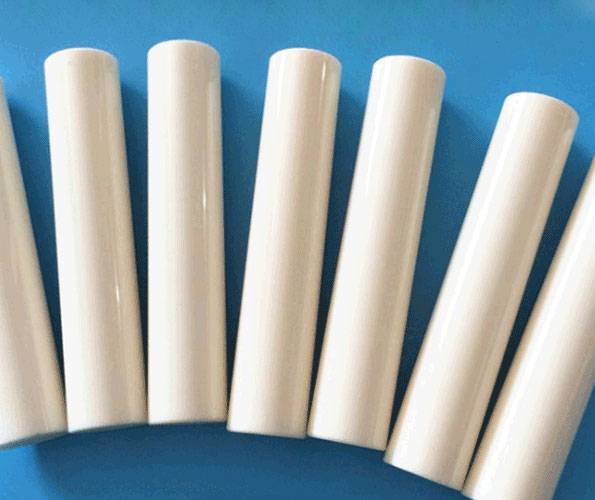
Dry bag pressing is commonly used for producing rods or tubes with diameters up to 200 mm and lengths up to 600 mm. It is particularly effective for pressing tubes with wall thicknesses of 2 mm or more, with tolerances varying between 0.1 to 1 mm depending on the dimensions. The strength of green compacts produced by dry bag pressing is comparable to those made by wet bag pressing.
| Aspect | Dry Bag Pressing |
|---|---|
| Mold Type | Integrated or exchangeable |
| Compaction Time | 5-10 minutes |
| Product Dimensions | Diameters up to 200 mm, lengths up to 600 mm |
| Wall Thickness | 2 mm or more |
| Tolerance | 0.1-1 mm |
| Strength | Comparable to wet bag pressing |
One of the key requirements for dry bag pressing molds is the thixotropy effect, which ensures proper pressure transformation. The mold material's viscosity must decrease under pressure to allow uniform pressure transfer to the powder, achieving the required compaction. Upon releasing the pressure, the viscosity increases back to its initial value, enabling subsequent press cycles.
Despite its advantages in speed and cost-effectiveness, traditional dry pressing molds are limited to small aspect ratio products and may not be suitable for more complex shapes or larger dimensions.
Application of Isostatic Pressing Molds
Isostatic pressing molds are indispensable in the production of advanced ceramics such as silicon carbide, silicon nitride, and zirconia. This technique ensures that the ceramic materials achieve high density, uniform pressure distribution, and superior product performance. The isostatic pressing process involves placing the ceramic green body in a closed container filled with liquid, where uniform pressure is applied to all surfaces. This method not only enhances the density but also minimizes sintering shrinkage and deformation, resulting in products with high strength and excellent machinability.
The benefits of using isostatic pressing molds are manifold:
- High Density and Uniformity: The uniform application of pressure across all surfaces ensures that the ceramic material achieves a high and consistent density.
- Improved Product Performance: The high density and uniform pressure distribution lead to enhanced mechanical properties, such as strength and wear resistance.
- Complex Shapes: Unlike traditional molding methods, isostatic pressing can produce long, thin, and tube-shaped bases that are otherwise difficult to manufacture.
- Cost-Effective Molding: The molds used in this process have a long service life and are relatively inexpensive, making the process economically viable.
- Large-Scale Production: Isostatic presses can handle large-size compactions, allowing for the production of multiple units in each cycle.
| Characteristic | Description |
|---|---|
| High Density | Achieves high and uniform density in ceramic materials. |
| Uniform Pressure | Ensures even pressure distribution across all surfaces. |
| Improved Performance | Enhances mechanical properties such as strength and wear resistance. |
| Complex Shapes | Suitable for manufacturing long, thin, and tube-shaped bases. |
| Cost-Effective | Molds have a long service life and are relatively inexpensive. |
| Large-Scale Production | Capable of handling large-size compactions and producing multiple units. |
In summary, the application of isostatic pressing molds in ceramic manufacturing significantly improves the quality and performance of the final products, making it a preferred method for producing high-performance ceramic components.
Adjustable High-Purity Alumina Ceramic Mold
The adjustable high-purity alumina ceramic mold is a sophisticated tool designed for precise and versatile mold shaping. This innovative mold system is equipped with several advanced features that enhance its functionality and flexibility.
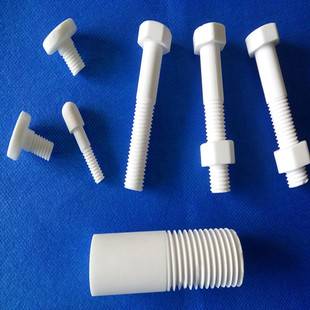
One of its key attributes is the adjustable injection size. This feature allows for the customization of the mold's cavity dimensions, catering to a wide range of product specifications. Whether producing small or large components, the mold can be easily adjusted to meet the required dimensions, ensuring consistency and accuracy in the final product.
The mold also incorporates symmetrically distributed screws and limit columns. These components play a crucial role in maintaining the structural integrity and alignment of the mold. The screws ensure that the mold halves are securely fastened together, while the limit columns provide precise positioning, preventing any misalignment during the injection process. This symmetrical distribution not only enhances the mold's durability but also ensures uniform pressure distribution, leading to high-quality molded parts.
Additionally, the mold features a bayonet system. This mechanism allows for quick and secure attachment of mold components, facilitating easy assembly and disassembly. The bayonet system's design ensures that the mold can be rapidly reconfigured for different shapes and sizes, making it highly adaptable for various molding applications.
In summary, the adjustable high-purity alumina ceramic mold stands out due to its ability to accommodate diverse product requirements through its adjustable injection size, robust screw and limit column configuration, and efficient bayonet system. These features collectively contribute to the mold's versatility, precision, and reliability in producing high-quality ceramic components.
Related Products
- Custom-Made Alumina Zirconia Special-Shaped Ceramic Plates for Engineering Advanced Fine Ceramics Processing
- High Purity Alumina Granulated Powder for Engineering Advanced Fine Ceramics
- High Temperature Alumina (Al2O3) Furnace Tube for Engineering Advanced Fine Ceramics
- High Temperature Wear-Resistant Alumina Al2O3 Plate for Engineering Advanced Fine Ceramics
- High Temperature Aluminum Oxide (Al2O3) Protective Tube for Engineering Advanced Fine Ceramics
Related Articles
- Cold Isostatic Pressing for Medical Applications Challenges and Solutions
- The Latest Advancements in Zirconia Sintering Furnaces for Dental Applications
- Unlocking the Power of Optical Quartz Plates: Applications and Benefits
- Dental Furnaces The Perfect Solution for Porcelain Processing
- Top 5 Features of a High-Quality Zirconia Sintering Oven
